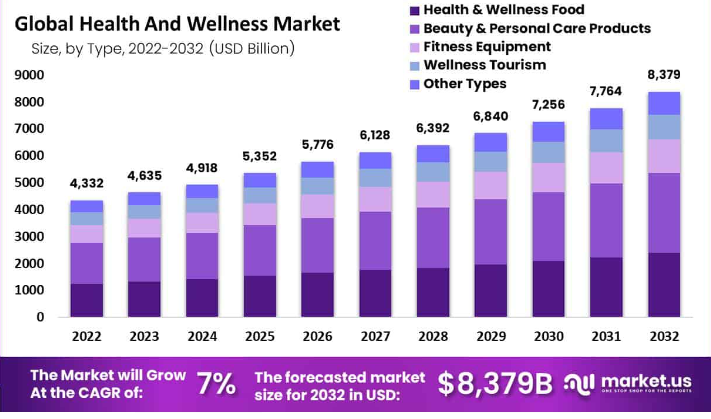

MLM software for health and wellness companies is a specialized digital platform that helps manage distributor networks, automate commission payouts, track product inventory, ensure regulatory compliance, and analyze business performance in real time.
It’s designed specifically for wellness-focused businesses—such as supplement brands, essential oils, fitness programs, and skincare lines—that use multi-level marketing or direct selling models. The software centralizes operations by offering features like:
In essence, MLM software enables health & wellness brands to scale globally, reduce admin effort, and maintain transparency and compliance, while empowering distributors with tools to grow their networks efficiently.
In the booming world of health and wellness, multi-level marketing (MLM) companies are increasingly relying on sophisticated software to manage distributors, track products, automate payouts, and ensure compliance. But when your business operates in the health & wellness sector — where regulatory scrutiny, product efficacy claims and channel complexity are heightened — the choice of MLM software isn’t just a back-office detail; it’s a strategic foundation. Here’s a deep dive into what health & wellness MLM companies need from their software, backed by real market data, emerging trends and best-practice prioritisation.
Before diving into software feature lists, it helps to understand the broader context:

When we translate business needs into software criteria, the following key areas emerge for health-&-wellness-focused MLM firms:
|
Why It Matters | Key Questions to Ask of the Software | |
|---|---|---|---|
| Product Traceability & Inventory Control | Health products often face scrutiny (claims, returns, regulatory checks). Accurate tracking helps protect brand reputation and manage risk. | Can the software manage batch/lot tracking, expiry dates, recalls? Is there real-time inventory status across geographies? | |
| Distributor / Rep Management & Compensation Automation | In MLM you must ensure fair, timely payouts and transparent structure management (team trees, ranks, qualifications). | Does it support complex compensation plans (binary, unilevel, matrix, hybrid) and handle automated commissions? What’s the latency for payout calculation? | |
| Compliance & Marketing-Content Governance | Health & wellness MLMs face higher risk of regulatory action (false claims, pyramid-allegations). Software must help enforce approved messaging and document everything. | Does it allow control of marketing assets, auto-flagging of non-approved claims, audit logs of rep communications? | |
| E-commerce & Omni-Channel Integration | Consumers expect seamless checkout, subscription products (nutritional programs, wellness kits), mobile-friendly experience. | Does the system integrate with web store, mobile app, funnel pages? Support for recurring billing/subscriptions? | |
| Data & Analytics for Growth-Insights | Early adopters of software get better visibility into performance of programs, products and distributor networks — enabling smarter scaling. | What built-in dashboards exist (e.g., distributor acquisition, churn, product sales by region)? Can you export raw data or integrate BI tools? | |
| Scalability, Multi-currency & Localization | Wellness MLMs often operate globally: multiple currencies, languages, regulatory regimes. Software must scale. | Does it support multi-country operations, tax/VAT rules, language localization, regional compliance? | |
| Security & Privacy (especially for health data) | Although most MLMs don’t handle medical records, health-/wellness-adjacent data (customer habits, subscription history) may be sensitive — and often regulations such as GDPR apply. | What security certifications exist? Is data encrypted at rest, in transit? Are there role-based access controls? | |
| Distributor Engagement Tools | Retention is a big challenge in MLM; software that helps education/training, gamification, mobile dashboards improves loyalty and performance. | Does it include a mobile rep portal/app, push-notifications, training modules, gamified leaderboards? |
Compared to generic MLM deployments (say selling accessories or household goods), health & wellness companies have unique demands:
Understanding where the industry is headed helps you select or build software that’s future-proof, not just fit for today.
Wellness consumers increasingly expect recurring programs (vitamin subscriptions, personalized nutrition, digital coaching). The MLM software must support subscription billing and churn analytics.
According to McKinsey & Company research, 82% of US consumers say wellness is a top priority and younger consumers (Gen Z/Millennials) are especially primed for science-backed, personalised offers.
(McKinsey & Company)
MLM software that supports customer segmentation, product personalization, mobile tracking will win.
With distributors increasingly leveraging social media, live videos, mobile apps, software needs strong mobile features: onboarding, training, sales conversion from mobile.
While still nascent, there’s research (e.g., a model called “HNMblock”) showing how blockchain and IoT can support wellness ecosystems by providing tamper-proof tracking, especially important in high-value wellness products. (arXiv)
As data accumulates (distributor behaviour, customer purchase patterns, product usage), wellness MLMs can leverage analytics or AI to identify top regions, high-performing distributors, churn risks etc. You’ll want software that can plug into BI or has built-in dashboards.
When evaluating software for your health & wellness MLM company, have this practical checklist ready:
These numbers highlight an important reality: adoption of advanced software is not a luxury, but a necessity if you want to stay ahead of the pack in wellness MLM.
For health & wellness-oriented MLM companies, the software platform you choose is more than a transactional tool — it’s the backbone of your go-to-market strategy. Because:
If you invest in the right software foundation now, your organisation will be well-positioned to scale, adapt to emerging wellness trends (digital programmes, mobile apps, AI-personalisation) and maintain competitive advantage in the health & wellness MLM space.
MLM software for health & wellness businesses helps manage distributors, automate commissions, track product inventory, and ensure compliance across global operations.
Because wellness products often face regulatory scrutiny, specialized software ensures claim control, product traceability, and global compliance.
Look for automated compensation engines, compliance tools, real-time analytics, subscription billing, and multi-currency support.
Top systems include tools to monitor distributor claims, approve marketing content, and log communications for transparency and audit readiness.
Yes. Advanced MLM systems support multi-language, multi-currency, and region-specific tax rules to enable seamless international scaling.
AI-powered analytics, blockchain for transparency, mobile-first distributor apps, and personalized wellness offers are key 2025 trends.
By offering gamified dashboards, training portals, and transparent commission tracking, MLM software keeps distributors engaged and loyal.
Yes. Integration with e-commerce, CRM, and wearable wellness apps allows synchronized customer journeys and real-time health data.
Pricing ranges from $2,000–$20,000+, depending on customization, integrations, and global scalability features.
Improved compliance, faster payouts, reduced admin time, and higher distributor retention can increase profitability by up to 35% annually.
👉 Try the official MLM Software Demo for Your MLM Business
and experience what MLM Software looks like when it’s powered by the best.
💌 Or, check out our blog
to compare top direct-selling companies, get insider reviews, and learn how to grow your income ethically in the wellness niche.